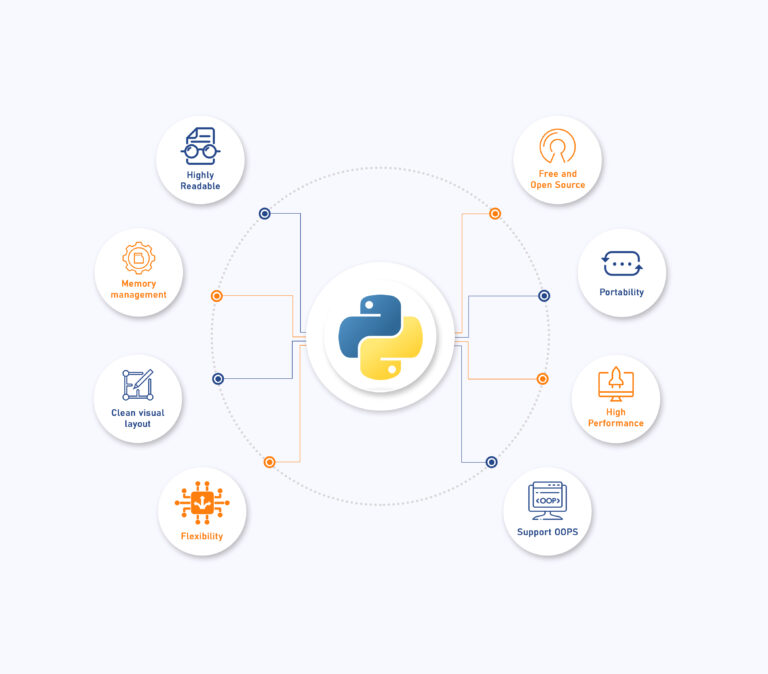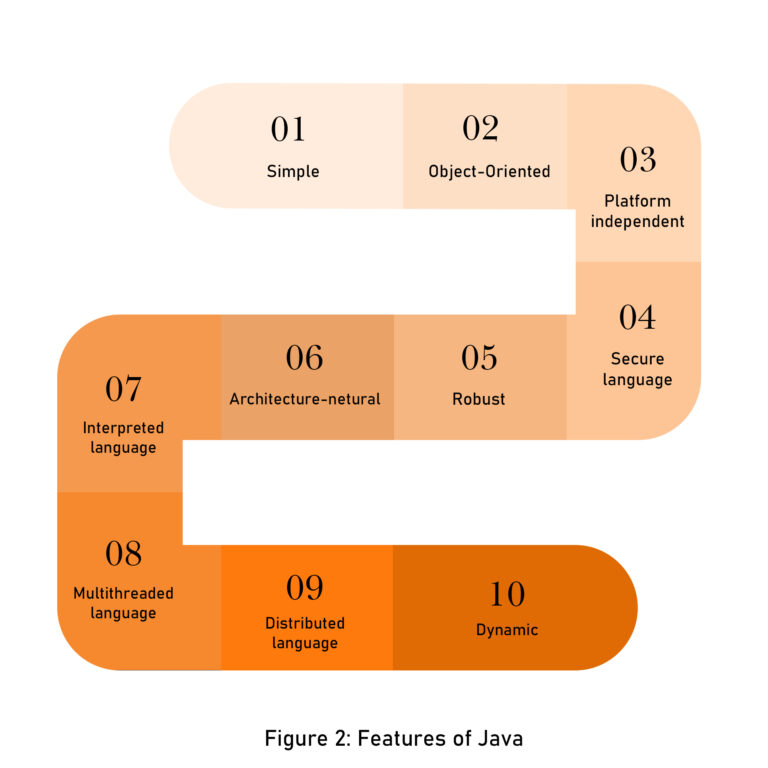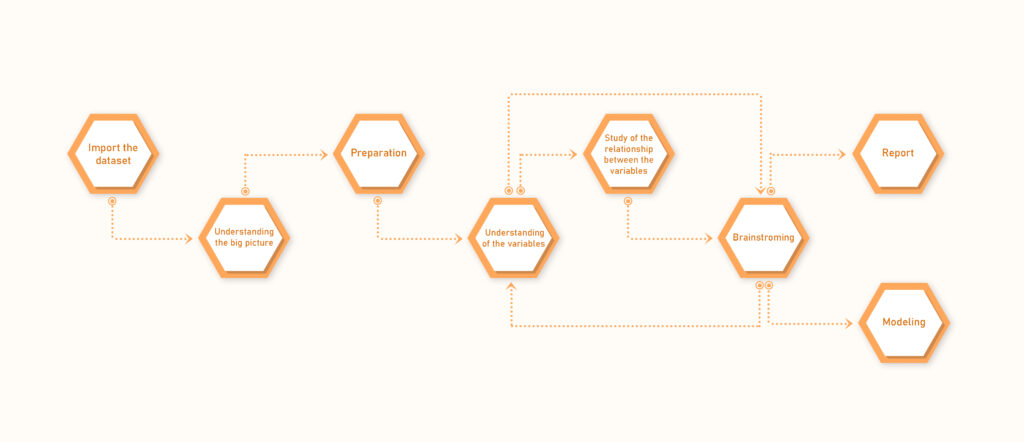First, let us understand what data analysis and modelling are and how Python and Java can help us to do it. Suppose we want to get input from the people in one line “how to write a good PhD dissertation”. Now, we have to choose the correct or the required input given by the people which is called data analysis. Furthermore, we have to provide a new concept to the readers so that they can know about it which is called modelling. Now, the ways in which Python and Java, which are object-oriented programming languages, will be discussing in this blog.
Defining Python
Python is an interpreted, high-level, dynamically semantic programming language. It is suitable for Rapid Application Development as well as for usage as a scripting or glue language to connect existing components because of its high-level built-in data structures, dynamic typing, and dynamic binding. The focus on readability and usability in Python’s short syntax lowers the cost of software maintenance. The modularity and reuse of code in programmes are encouraged by Python’s support for modules and packages. For all widely known systems, the Python interpreter and its comprehensive standard library are freely available in source or binary format.
Python’s increased efficiency frequently leads to programmers falling in love with it. Because there is no compilation stage, the edit-test-debug cycle is incredibly speedy. Python programmes are easy to troubleshoot because a segmentation failure is never the result of a bug or bad input. Instead, if an error is discovered, the interpreter raises an exception. If the programme doesn’t handle the exception, the interpreter publishes a stack trace. A source-level debugger allows you to set breakpoints, evaluate arbitrary expressions, view local and global variables, step through the code one line at a time, and use other features. The debugger, created in Python and used by PhD researchers for their dissertations, serves as an example of how Python may conduct introspection.

What is Java?
A general-purpose, object-oriented, class-based programming language called Java was created with the idea of requiring little in the way of implementation. It serves as a platform for software development. Java is hence efficient, secure, and reliable. Java apps for smartphones, game consoles, computers, data centres, and other devices are frequently made using it.
Web applications, which serve as the cornerstone of any digital business, are best created utilising Java technology. Web containers for Java components, XML, and online services that communicate with databases and offer dynamic web content are known as Java application servers. Enterprise applications may be deployed in a secure environment using Java application servers thanks to their features for transaction management, security, clustering, performance, availability, connection, and scalability. Hence, the PhD students can use Java to write a dissertation based on this programming language.

Use of python in data analysis and modelling

Figure 3: Steps in data analysis and modelling using Python
Data analysis
You may include Python data analytics in your current business intelligence and analytics solutions in a number of different ways. Python’s ability to swiftly generate and maintain data structures is one of its most popular applications; Pandas, for example, provides a wealth of tools to modify, analyse, and even depict data structures and complex datasets. This includes using time series and more sophisticated data structures, such as merging, pivoting, and slicing tables, to produce fresh interpretations of old data sets.
Another strong feature that makes Python popular with data scientists and analysts is its extraordinary adaptability. Data models can be built, data sets can be systematised, ML-powered algorithms can be produced, web services can be developed, and data mining can be utilised to quickly fulfil a variety of tasks.
It is commonly recognised that visual information is considerably simpler to understand, process, and remember. Python offers customers a wide variety of visualisation choices. It is therefore an essential technique for all data research, not simply data processing. Data analysts can increase the accessibility of their data by creating a variety of graphs and charts as well as interactive plots that are suitable for the web.
Modelling
The basis of Python is the Data Model. Internally, the Data Model contains design and coding building blocks. It is made up of objects, which are considered entities. In Python, supposedly, everything is an object. Each entity has unique characteristics (properties) and associated actions or behaviours known as methods. An identity, a type, and a value are the three attributes that each object has. The two ways in which python can help are first it identifies an object and then it identifies its types and values. Hence, it significantly helps the PhD students in data modelling using Python.
Use of Java in data analysis and modelling
Data analysis
Let us shortly say what data analysis is. The process of cleansing, converting, and modelling data in order to find relevant information for business decision-making is known as data analysis. The objectives of data analysis are to extract useful information from data and make decisions based on that analysis.
The majority of developers are comfortable writing Java code. In addition to having a large user base, Java is also one of the most in-demand skills on the market because businesses often employ it for all projects that can be completed fast. Java is a heritage language as well, meaning that it is utilised by numerous significant businesses and applications around the globe.
The distinctive grammar of Java is well-liked throughout the world due to its simplicity. Developers can comprehend norms, variable requirements, and development approaches thanks to this syntax. Java is strongly typed, meaning that every data type is predefined in the language’s structure and that all variables must be a member of at least one data type.
Modelling
Let us know what modelling is. Data modelling is a method for creating a clear image of a software system and the data pieces it contains by using words and symbols to represent the data and how it flows. For creating a new database for researching an old application, data models offer a blueprint. In general, data modelling assists a company in efficiently using its data to fulfil informational business needs.
To create a data model, there are two methods:
- The Business Application Modeler can be used to create the data model. Using SQL, it generates the classes and fills them with data. The data schema is also developed.
- The data model can be written by hand. You are in charge of writing the code that builds and populates the classes when you manually create a data model.
Conclusion
Data analysis and modelling portray an essential role in a PhD research project especially if Java and Python are used in this. We, at Chanakya research, can also help you with data analysis and modelling using Python and Java at an affordable price.
We use both python and java in data analysis and modelling and still provide you with our service at an affordable price. To know about it, please visit our website https://www.chanakya-research.com/.
